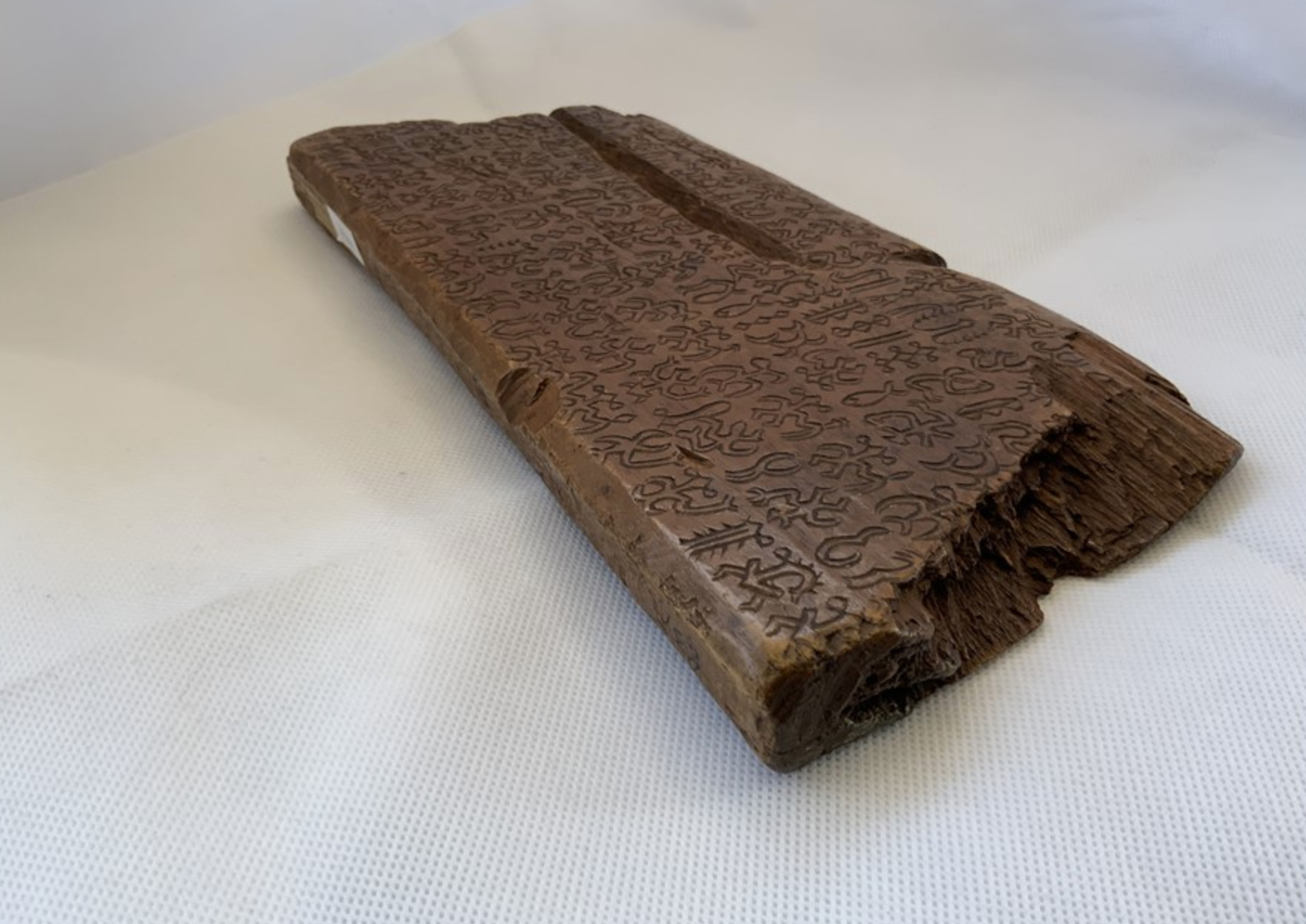
New research published on February 2nd in the journal Scientific Reports reveals an ancient wooden tablet found on Rapa Nui, also known as Easter Island. This tablet contains mysterious writings known as the “rongorongo” script. What’s intriguing is that this tablet predates the arrival of Europeans on the island by more than two hundred years.
Experts believe this discovery strengthens the idea that the rongorongo script could be one of the few writing systems invented independently. The wooden tablet, along with three others, is part of a collection in Rome.
Analysis shows that the wood dates back to between 1493 and 1509. This finding pushes back the timeline significantly, considering Europeans didn’t set foot on Easter Island until the 1720s.
Silvia Ferrara, the main researcher of the study and a language expert from the University of Bologna in Italy, explained that the findings support the notion that the rongorongo script was created independently by the people of Rapa Nui. It suggests they weren’t influenced by the writing styles they might have seen from Europeans.
New radiocarbon dates from Rapa Nui (Easter Island) reveal a possible example of the independent invention of language with the undeciphered Rongorongo script.https://t.co/M78SacxCPc pic.twitter.com/esgQYLLc7s
— USU Anthropology (@usu_anthro) February 5, 2024
The intricate symbols of the rongorongo script bear no resemblance to European letters. This adds more weight to the theory that the language was created on its own.
Silvia Ferrara pointed out that, historically, when borrowing a writing system, people tend to stick closely to the original. Since the rongorongo glyphs are so distinct, it is quite possible they were not borrowed from European writing systems.
Radiocarbon dating of three of the tablets
Rapa Nui, located about 2,400 miles (3,800 kilometers) off the coast of Chile, was inhabited by people between 1150 and 1280. Even though Europeans reached the island in the 18th century, they didn’t pay attention to the unique glyph-based script until 1864.
Today, only twenty-seven wooden objects with this script remain, none of which are on the island anymore. In 1869, Catholic missionaries took four of these tablets and sent them to the bishop of Tahiti, who eventually sent them to Europe, as reported by Live Science.
Ferrara and her team performed radiocarbon dating on small samples taken from the four rongorongo tablets stored by a group of Catholic nuns in Rome. Their analysis revealed that three of the tablets were made from trees cut down in the 18th or 19th centuries.
The radiocarbon date of the fourth tablet indicated it was crafted from a tree cut down in the 15th century. Ferrara explained that this finding means the script existed before Europeans arrived on Rapa Nui, supporting the idea that the rongorongo script was in use prior to their arrival.
However, Ferrara added that there’s a possibility the glyphs were carved on “old wood” from a tree cut down long before the rongorongo script was inscribed on it.
See all the latest news from Greece and the world at Greekreporter.com. Contact our newsroom to report an update or send your story, photos and videos. Follow GR on Google News and subscribe here to our daily email!



